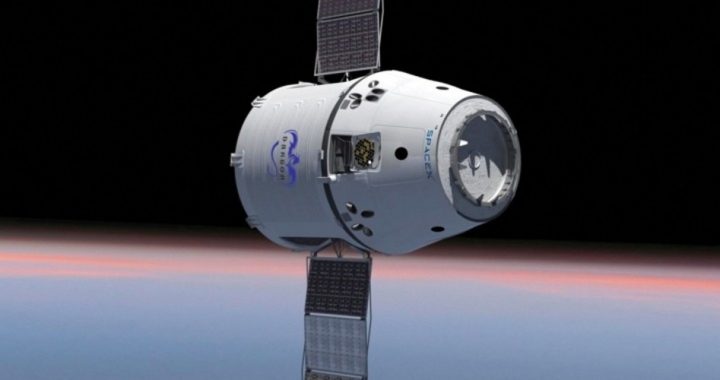
With the announcement that Mars One, the completely private Dutch company committed to establishing the first human presence on Mars by the early 2020s, has acquired a number of private sponsors, the push to put human boots on the Red Planet is officially underway. This, after decades of expectation that it would be NASA or some other government agency that would achieve on Mars what was accomplished on lunar soil in 1969.
Those of us whose memories extend back to the 1970s or earlier can well recall the almost universal expectation that, by the year 2000, mankind would certainly have colonized Mars, the Moon, and possibly other locales in the Solar System. Everyone believed that the 21st century would be heralded by space stations, commercial activity on the moon and the asteroids, and a fully space-faring civilization.
Needless to say, it hasn’t turned out that way.
While innovations like the Internet have certainly helped fulfill the sci-fi-envisioned potential of computers, and while cellphones and Skype have taken global communication into the realm of science fiction, mankind remains largely earthbound, relying for his knowledge of the cosmos on sophisticated unmanned probes like NASA’s newly landed Curiosity rover on Mars and the Dawn spacecraft exploring the asteroid belt. Enormously intricate technological triumphs like the Hubble Space Telescope (which, be it remembered, was launched with a flawed lens that took years to correct) probe the reaches of deep space — realms that mankind shows little prospect of ever being able to visit in person, at least at the current rate of development.
To be sure, despite our recent successes in identifying so-called “exoplanets” (planets orbiting stars other than the sun), we have not so far found any that seem to be as hospitable as our own blessed blue marble. Even our nearest planetary neighbor, Mars, does not appear to be a candidate for mass human settlement, given its scarce life-giving resources and its much lower gravity. Mars’ thin atmosphere would afford scant protection from solar radiation and cosmic rays, while its frigid surface temperatures and unbreathable atmosphere militate against any possibility of large-scale, completely self-sufficient human presence, at least with technology in the foreseeable future.
But one of the characteristic features of modern man has always been his will to explore and to open up new frontiers, and space is without question the “final frontier.” Why, then, is it taking us so long to get there in person?
In a word: government. It turns out that, for large, visionary projects, government is occasionally good at starting the ball rolling, but absolutely terrible at preserving its momentum.
Consider the history of American exploration. Many of the first Europeans to discover and explore the New World — Columbus, Pizarro, Cabot, Cartier, Vespucci, and the like — were chartered and funded by European governments to take risks (sail into the unknown western ocean in search of mythic new lands and a trade route to the Orient) that purely private mercantile ventures probably would have been unwilling to undertake. But once the existence of a New World was established, the story of its colonization was a private one. By the early 1600s, large numbers of private Dutch and English vessels were ferrying paying passengers across the Atlantic on one-way tickets to the New World. Certain of my ancestors traveled on one of them, the Dutch vessel De Trouw, in the mid-1650s.
Interestingly, in certain areas of the New World, government, for various reasons, maintained strict controls on European settlement and even entry — places like the north coast of South America (now the countries of Guyana and Suriname, and the French overseas department of French Guiana), as well as the island of Newfoundland and the territory of Labrador in what is now Atlantic Canada. In Newfoundland and Labrador, for example, the British government made almost any form of permanent settlement illegal until the late 1700s, believing in its dubious wisdom that the area should remain property of the Crown because of the immense riches associated with the North Atlantic cod fishery. Those few people who defied the ban on permanent settlement, so-called “livyers,” were forced to eke out hardscrabble livelihoods in the remotest outports, periodically fleeing to hide in the deep forest to avoid forcible deportation. Under such conditions, Newfoundland and Labrador lagged far behind most off the rest of North America in terms of settlement and development and still have not attained, in many respects, the standards of living found elsewhere in Canada. Meanwhile, the countries of northern South America’s “Wild Coast” remain among the most isolated and backwards in the world, plagued by high crime and ethnic unrest and misruled by terminally corrupt, even dictatorial, governments.
Our point is that, wherever government insisted on being the permanent gatekeeper of colonization and settlement, progress faltered measurably. But wherever government stepped aside, to one degree or another, frontiers were tamed and human settlements flourished.
Much the same could be said of space, our modern frontier. After the successful push to put men on the moon, NASA chose an entirely new tack. Instead of taking the next logical steps, which were eminently achievable even forty years ago — moon bases and mineral extraction — the U.S. government decided to pour all of its assets into creating and sustaining a fleet of reusable spacecraft. The space shuttles, like the Saturn 5 rocket, were a technological triumph, but they had the unintended consequence of keeping man in low earth orbit for the next three decades, permitting the launching and servicing of the likes of the Hubble Space Telescope and the eventual construction and staffing of the International Space Station, but preventing humans from returning to the moon or from journeying into cislunar space.
During that same span of time, the privatization of space was considered officially unthinkable. Only government-approved scientists could be trusted to make proper choices about space exploration, it was averred. But scientists, for all their merits, are interested in doing science, which is why business ventures like mining on the moon or asteroids were not something NASA ever seriously considered.
Yet the history of exploration shows that it is always sustained by commercial motives. The men who first crossed the North Atlantic were looking for better fishing grounds. Those who explored the American tropics hoped to find sources of gold and silver. Those who settled the North American interior were driven, in the first instance, by the quest for furs, especially beaver pelts, and later by the potential for farming, timbering, ranching, and mining.
The exploration of space is no different in principle, and now, with the arrival of privatized space ventures, the power of the free market is finally being brought to bear on the Final Frontier. A group of wealthy entrepreneurs, many of them products of the Internet boom, has announced the formation of a venture to mine asteroids, many of which are believed to possess troves of valuable minerals rare on earth, like platinum. The potential for space tourism has generated a crowded field of would-be space safari companies, led by Richard Branson’s Virgin Galactic, whose airplane-launched spacecraft have already made history in becoming the first privately-made vehicles to carry a human being into space. California-based XCOR Aerospace is planning to begin carrying paying passengers and scientific and commercial payloads into suborbital space within two years — aboard its own reusable space plane, the Lynx, whose construction has taken a fraction of the time and resources poured into the space shuttles. And in May of this year, SpaceX achieved the first-ever successful launch and payload delivery to the International Space Station by a non-government entity. Its rocket, the Dragon, is many times cheaper and more fuel-efficient than anything ever produced by NASA, and within three more years, is expected to be carrying astronauts into orbit. SpaceX is determined to provide the craft to return men to the moon later in the decade and to be among the first to carry explorers and tourists to Mars. Given their track record so far, it is difficult to disbelieve them.
To be sure, the privatization of space continues to have its detractors, especially among the ranks of the so-called “international community” (read: the UN and its affiliates), who have expressed reservations about whether the private exploitation of resources in space is legal under international law. But many even in the scientific community, faced with dwindling government funds and declining political interest in subsidizing space science, are embracing the promise of privatization. Said Nobel physics laureate Gerard t’Hooft concerning Mars One, “this is an extraordinary project, by people with vision and imagination…. This is going to be a private enterprise. Only private firms are going to contribute. No political mumbo-jumbo. No taxpayers’ money is going to be involved. “
That, in a nutshell, is the promise of privatized space. May such ventures live long and prosper.
Computer generated image provided by SpaceX showing their Dragon spacecraft: AP Images



